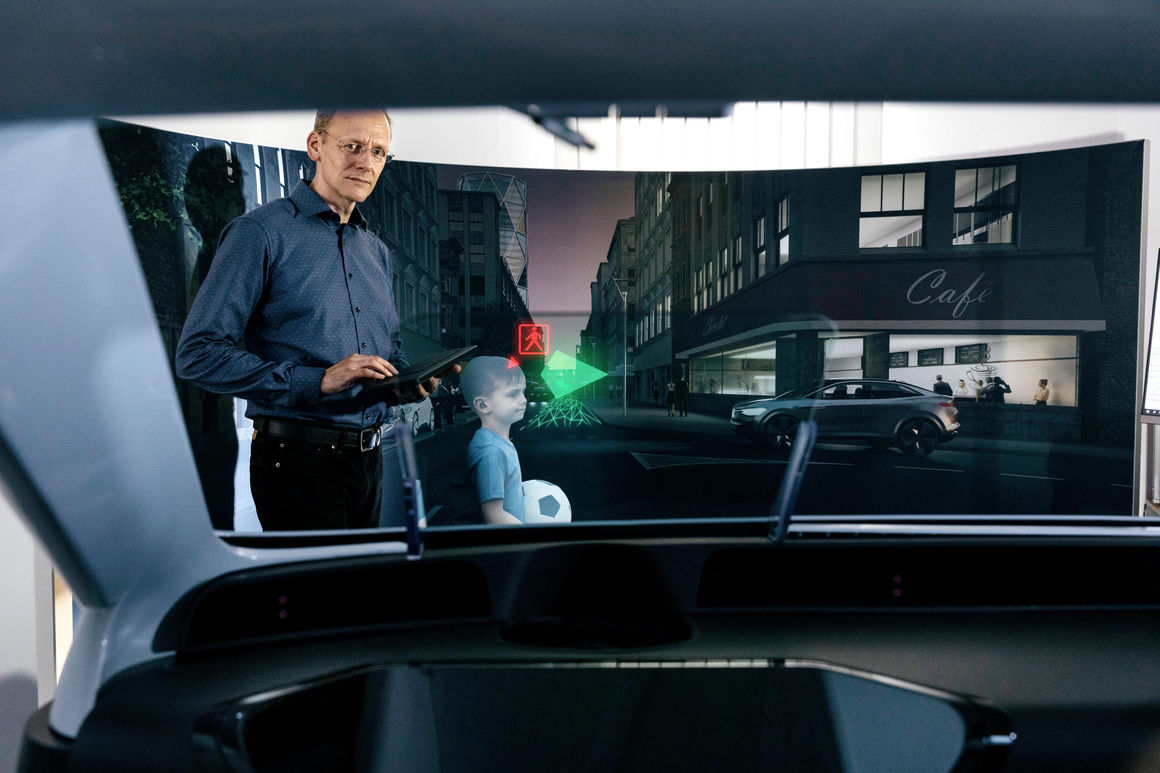Volkswagen Group Acquires Stake in the 3D Holography Company SeeReal
Volkswagen has acquired a minority stake in the German augmented reality imaging company SeeReal Technologies which is based in Dresden and Luxembourg. The German automaker expects the investment to secure it an access to future-oriented augmented reality for the futuristic display technologies it wants to roll out in the car that will make driving safer and more comfortable.
The investment is focused on developing a holographic display technology that is set to replace the touchable displays. Volkswagen’s fully electric ID.3 which hits the market in 2020 is expected to feature this technology with an augmented reality head-up display.

The SeaReal 3D display technology works on a true-interference-based holography. The prototypes, holographic 3D designs and the systems in SeeReal are not simply based on semi-transparent mirrors and simple imaging on flat screens. Rather, the SeeReal solution reconstructs the complex 3D scenes and 3D objects in real space.
Rather than attempting to reconstruct the large real-time holographic display to generate most of the information that is invisible to the viewers of the display, the SeeReal solution deploys another proprietary solution which limits the information to what the observer can see at a particular point in time and space i.e. each eye during each frame.
The information that can be seen is limited to the Viewing Windows or eye boxes which in turn also limits the area on the physical display and the hologram that is needed to encode information for individual parts of the 3D scene.
The SeeReal solution in effect discretizes the hologram. Every 3D scene point is encodable in a very small individual hologram that is then super-positioned to create the entire 3D scene. SeeReal refers to these hologram factions as “sub-holograms”.
Approximately 2 million sub-holograms are computed and then combined to a hologram frame of the typical 3D scene with full HD resolution. As a result, the holographic 3D streams from SeeReal include full holographic representations of the 3D scenes in each frame. The visible 3D world is always there no matter which part of the display the user looks at. The holographic 3D display provides users with a window into the 3D world.
The SeeReal H3D display prototypes leverages these proprietary principles of the Viewing Windows and Sub-holograms for its real-time interactive and HD resolution 3D reconstructions. The real-time code generation is also portable to multiple platforms such as GPU, CPU and FPGA.
The research project will equip VW with the holographic technology that will help make driving not only safer but also more convenient in the near future.
It will make it possible for potentially dangerous situations to be projected onto the driver’s environment in 3D. The technology also allows for the suspension of “touchable” displays in place of controls. Phone conversations can appear as holograms. Even kids in the backseat of the vehicle will have their own free-floating 3D Tetris which they can play to keep themselves entertained and beat the boredom.
Should this technology materialize, future head-up displays will have 3D representations merging even more seamlessly with the environment so as to allow for innovative display concepts both close to the driver and in the distance. The conventional dashboards of the future may even be obsolete and the vehicles of the future could be controlled by sets of virtual switches and displays. Finally, passengers may in the future have “touchable” 3D displays with natural interaction and vision for their entertainment needs.
The technology could, in effect, replace the analogue fittings in the vehicle with holographic interactive displays. VW believes that the vehicle dashboard as we know it may disappear in the future to create a scenario where vehicles will be operated through switches and displays which can be used by all the passengers in the vehicle.
Precise 3D Project is Thanks to Eye-Tracking
SeeReal’s patented rendering technology projects visual information directly into the user’s eyes. Data from an eye-tracking system is used to generate an accurate 3D perspective. The unique aspect about SeeReal’s solution is that it only renders a small part -the portion of the 3D object that fits through the narrow pupil- of a 3D object to the user’s eyes. The viewer does not notice the data reduction in the image projection.
SeeReal’s depth representation should be infinitely variable and will work both in the distance as well as in close proximity. According to information on the company’s website, its holographic 3D technology can also be used with mixed reality glasses. The video below shows SeeReal’s technology in action.
https://virtualrealitytimes.com/2019/08/31/volkswagen-group-acquires-stake-in-the-3d-holography-company-seereal/https://virtualrealitytimes.com/wp-content/uploads/2019/08/Volkswagen-invests-in-SeeReal-Technologies-600x400.jpghttps://virtualrealitytimes.com/wp-content/uploads/2019/08/Volkswagen-invests-in-SeeReal-Technologies-150x90.jpgBusinessStartupsVolkswagen has acquired a minority stake in the German augmented reality imaging company SeeReal Technologies which is based in Dresden and Luxembourg. The German automaker expects the investment to secure it an access to future-oriented augmented reality for the futuristic display technologies it wants to roll out in the...Sam OchanjiSam Ochanji[email protected]SubscriberVirtual Reality Times - Metaverse & VR
